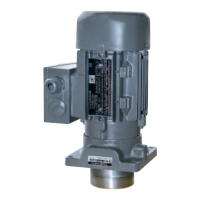Page 9
EN
Assembly instructions
1.7 Explosion protection information
Danger!
Only the pump models tested and ap-
proved by SKF Lubrication Systems
Germany GmbH in accordance with
ATEX Directive 2014/34/EU are per-
mitted to be used in areas with explo-
sion protection. The relevant class of
protection is engraved on the pump's
nameplate.
When filling lubricant into the pump,
make sure the lubricant is clean. The res-
ervoir must be filled in good time (pay at-
tention to fill level monitoring). Lubricant
must be filled only via the filler socket
G 3/8“ (FF) or G 1/2“ (FB) on the pump
flange. Lubricant may only be filled via
the "reservoir cover" if absolutely certain
that no potentially explosive atmosphere
exists.
In case of overfilling, the excessive
amount of lubricant must be removed.
Make sure there is no potentially explosive
atmosphere when doing this.
The switching circuits of the fill level
monitor must be supplied by an intrinsically
safe circuit, e.g., through the installation
of an ATEX-compliant isolating switch by
the customer. The unit must be grounded
via a ground connection. The customer
must install adequate overload protection
for the power consumption of the motor.
To avoid electrostatic discharge, lay
hydraulic connecting lines in corrosion-
resistant metal tubing, e.g., stainless steel
pipe.
When setting up the pump, make sure
the setup location is level and not subject
to vibrations or jolts.
During maintenance work, use only tools
intended for use in potentially explosive
spaces or else make certain that there is
no potentially explosive atmosphere
present.
The service life of the oil lubrication pump
is limited. It must therefore undergo a
function and leak test at regular intervals.
Perform appropriate repairs in the event
of malfunctions, leaks, or rust. Replace
the pump if necessary.
The user must make sure through the
choice of the lubricant to be delivered that
no chemical reactions capable of serving
as ignition sources will occur in conjunction
with the explosive atmospheres expected.
The lubricant’s ignition temperature has to
be at least 50 kelvin above the pump’s
maximum surface temperature
(temperature class).

